These Low-Cost Eco-friendly Rajasthani Homes Can Survive Floods & Earthquakes!
In Barmer, three simple factors are helping houses safely withstand extreme weather conditions, from incessant rains to raging dust storms. Find out what they are!
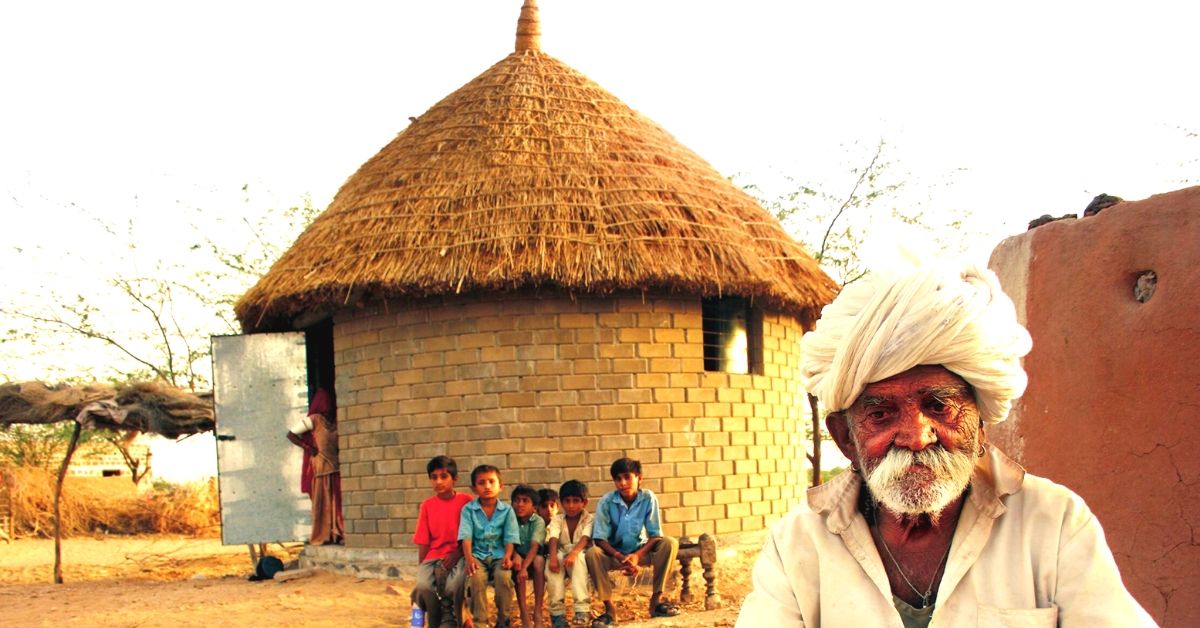
A few drops of rain and Barmer, a drought-affected district in Rajasthan, rejoices. However, in 2006, a flash flood turned their joy into misery instead and rendered hundreds of villagers homeless in the region.
The dreadful month of August received about 577 mm of rainfall in three days, 300 mm more than the annual average rainfall of 277 mm with the water levels reaching 25 feet above ground level, say the figures that Delhi-based non-profit organisation Sustainable Environment and Ecological Development Society (SEEDS) provided.
Small steps can go a long way to make a big impact. Make your homes environment-friendly with these home-improvement products at The Better India Shop.
A Times of India report stated that the flood killed 104 people and 75,000 cattle and destroyed crop worth Rs 1,300 crores.
Displacement of residents is the most common consequence of floods, whether it is in urban areas like Mumbai and Chennai or rural areas hit in the on-going floods in Assam. According to NDTV, more than 4,000 villages in Assam have submerged in the rains.
As uncertain weather patterns continue to disrupt people’s lives, many locals are now coming together to build houses that are resistant to disasters.
In Barmer village too, in 2006, villagers had stepped in and started constructing durable houses after SEEDS intervened.
The 25-year-old organisation works towards disaster response and rehabilitation. It is also India’s first agency to be certified for the Global Core Humanitarian Standards—an international certification for quality and accountability in humanitarian response.
With financial support from Christian Aid and ECHO (European Commission Humanitarian Aid Department), SEEDS constructed 300 houses across 15 flood-affected villages in Barmer to meet the immediate housing need.
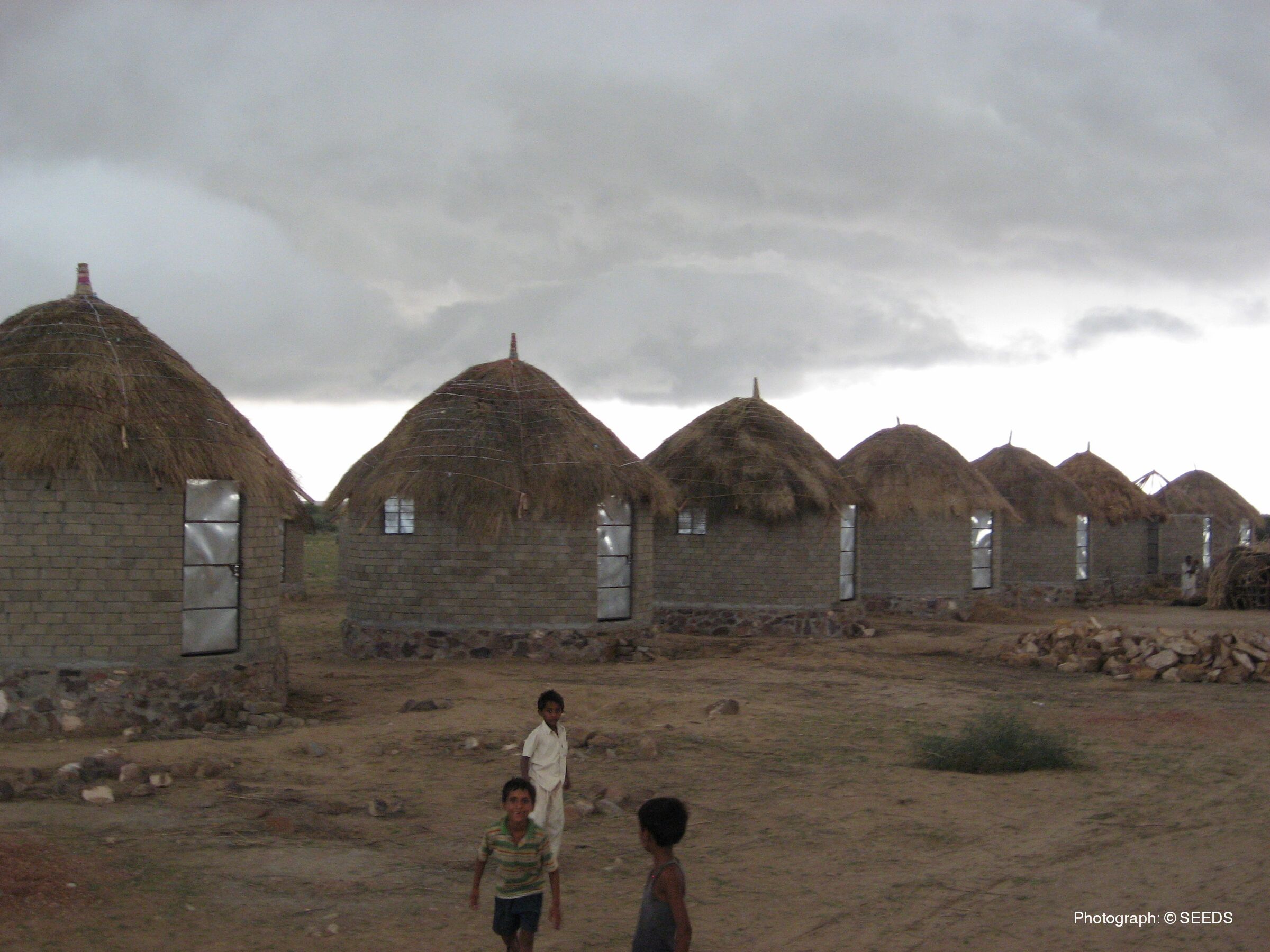
While the whole village of New Kotra was relocated to another area, 65 families had to be transferred from their home village of Jalela. As SEEDS worked in consultation with the local administration from the very beginning, it was easy for them to get the land for relocation sanctioned by the government.
Dr Anshu Sharma, Co-founder of SEEDS tells The Better India, “The houses were constructed using modern technology and locally available resources. To make them more durable, their foundation was laid four feet deep. The stepped foundation of the houses ensured that the load of the structure effectively got transferred to the foundation and ultimately to the firmer ground below. The depth of the foundation was kept at four feet to provide strength to the structure to withstand future flooding or seismic activity.”
The blocks have been placed in an interlocking manner instead of being fixed on top of each other.

Many cultures consider houses as living things. There is a lot of emotions and respect that people give to their houses. Thus, we tried to use a simple design and technology but in complete compliance with local environmental and cultural nuances, says Dr. Sharma.
The flood-resilient houses, on a priority, were given to families belonging to marginal communities, including socially excluded groups, households headed by widows or persons with disabilities.
Barmer Ashray Yojna
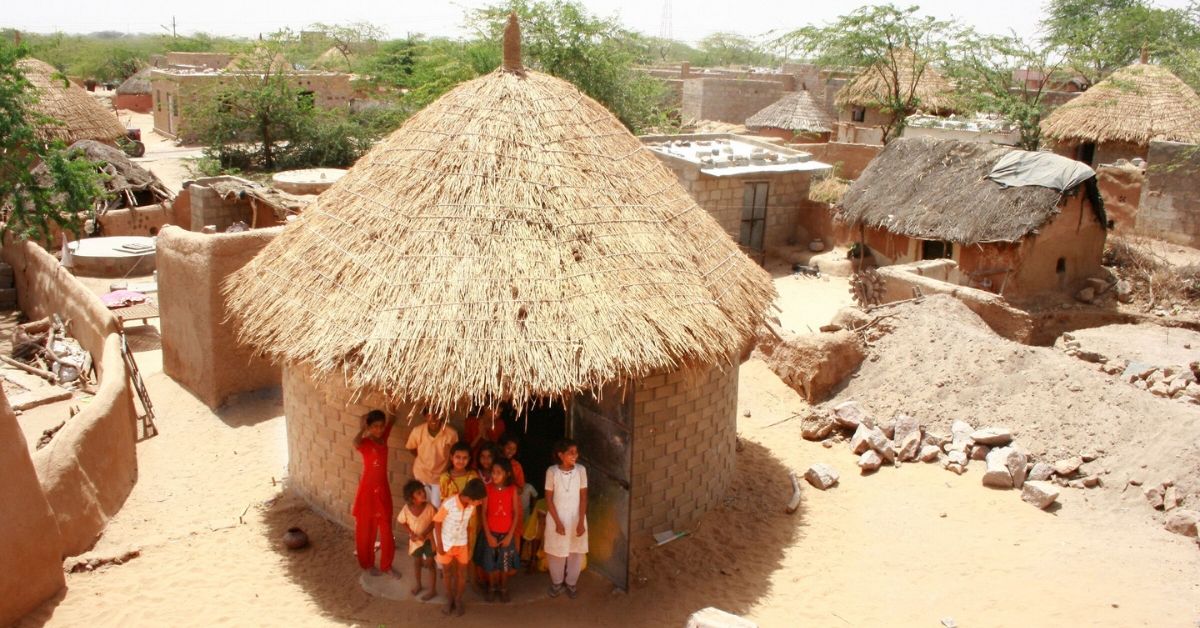
Under the Barmer Ashray Yojna initiative, SEEDS took help from the Barmer district administration to mobilise the community.
The best way to uplift the victims from their loss is to give them a platform where they can start from scratch. We did not hire a single mason for the construction process.
Thus, they formed Village Development Committees (VDCs), each comprising six to ten members from a particular village or community. Teachers, village heads and government representatives were looped in to educate the villagers about the importance of eco-friendly houses.
They trained men, women and the elderly to make building blocks, do plasterwork and assemble the homes.
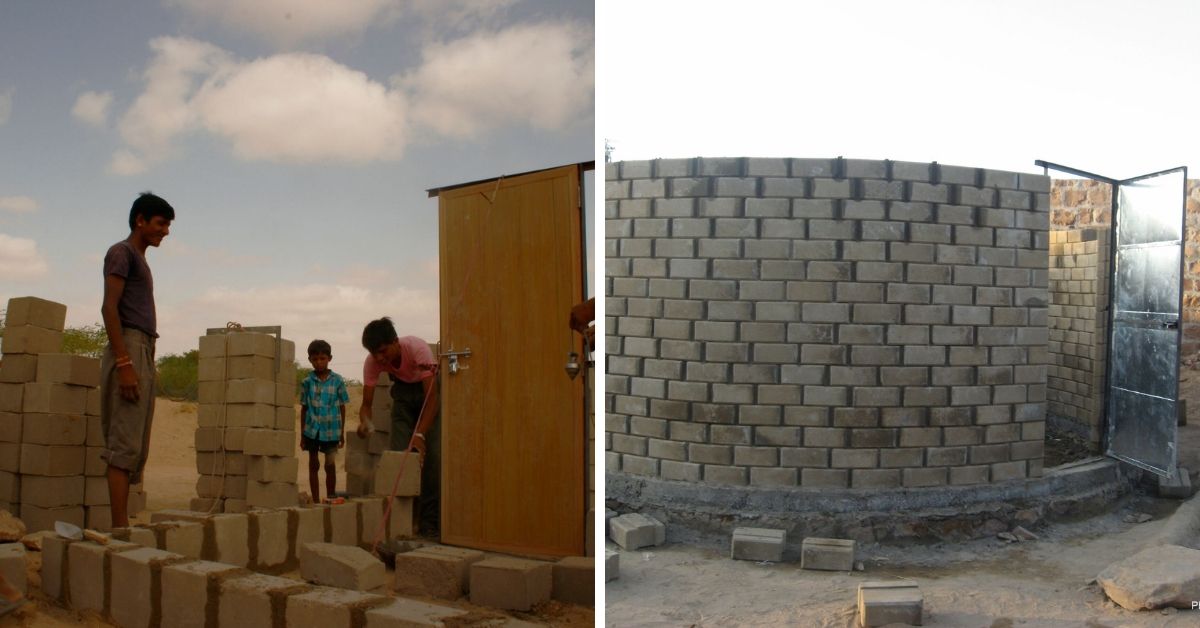
The technology itself was kept basic, and 23 villagers were trained on manual block-making machines. Community workers managed the five manual machines and four block fabrication units. Following the training, trained masons built most of the houses, says Dr Sharma.
Meanwhile, social and technical experts from the organisation studied the weather condition of the district. Since temperatures range from 50 degrees in summer to freezing point in winter, they gave thermal regulation the utmost priority. Their aim was to reduce or increase temperatures inside the new houses by 10 degrees, depending on the season.
As for the design, every house has three vital elements – a cylindrical shape, mud and thatched roofs. While the houses damaged during the flood were also made with mud, the only difference now was the stabilisation process of the mud.

SEED used Stabilised Compressed Interlocking Earth Block (SCEB) technology to stabilise the local mud with 5 per cent cement. It was then compressed into blocks that have high structural strength and water-resistant capability.
Insulated walls that have large pores are thick enough to provide thermal comfort inside the houses. The pores also allow cool breeze to enter the house.
Likewise, the roofs made from eco-friendly materials like millet, bamboo and saniya (a type of grass) allows heat to enter the house during winters and block it when the temperatures rise.
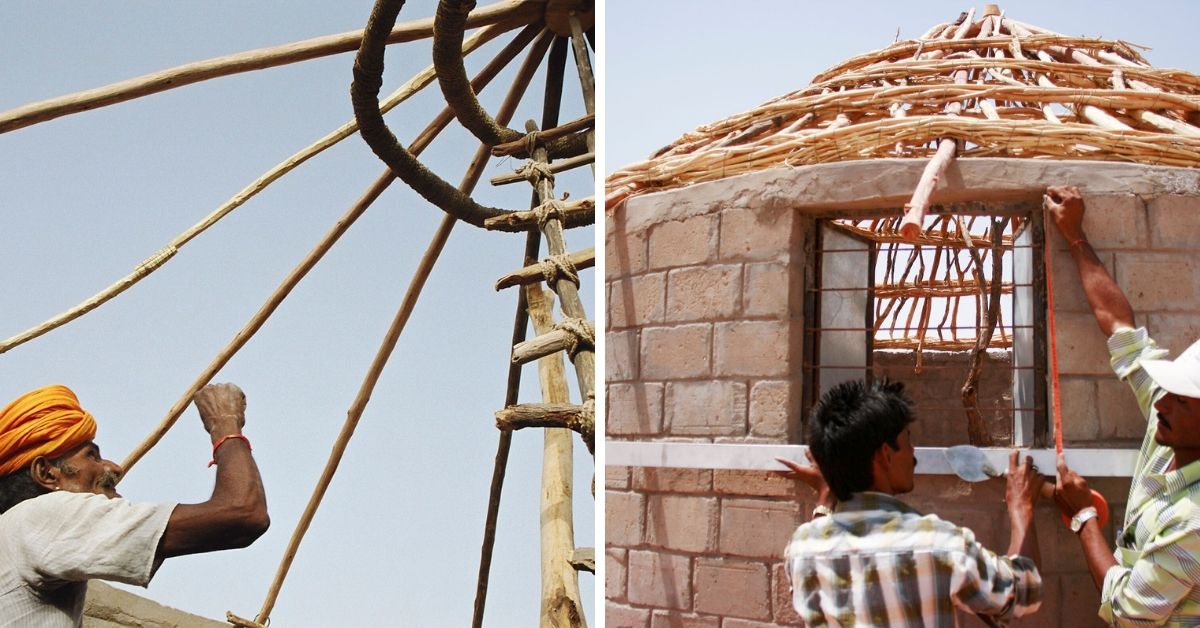
The placement of the hutments ensures sufficient ventilation, thus eliminating the need for a fan or a heater.
Explaining the science behind giving a cylindrical shape to the houses, Dr Sharma says, “During rains, water gets accumulated at the edges of a rectangular or square structure. The circular shape lets the water flow along the circumference of the houses.”
The opening of the door is outwards instead of inwards to ensure the residents can vacate the houses immediately in case of any disaster.
Each house cost Rs 40,000, and a significant reason behind the low cost is the locally-available materials. Not a single construction material was transported as the masons built them on site. This saved a lot of transportation cost.
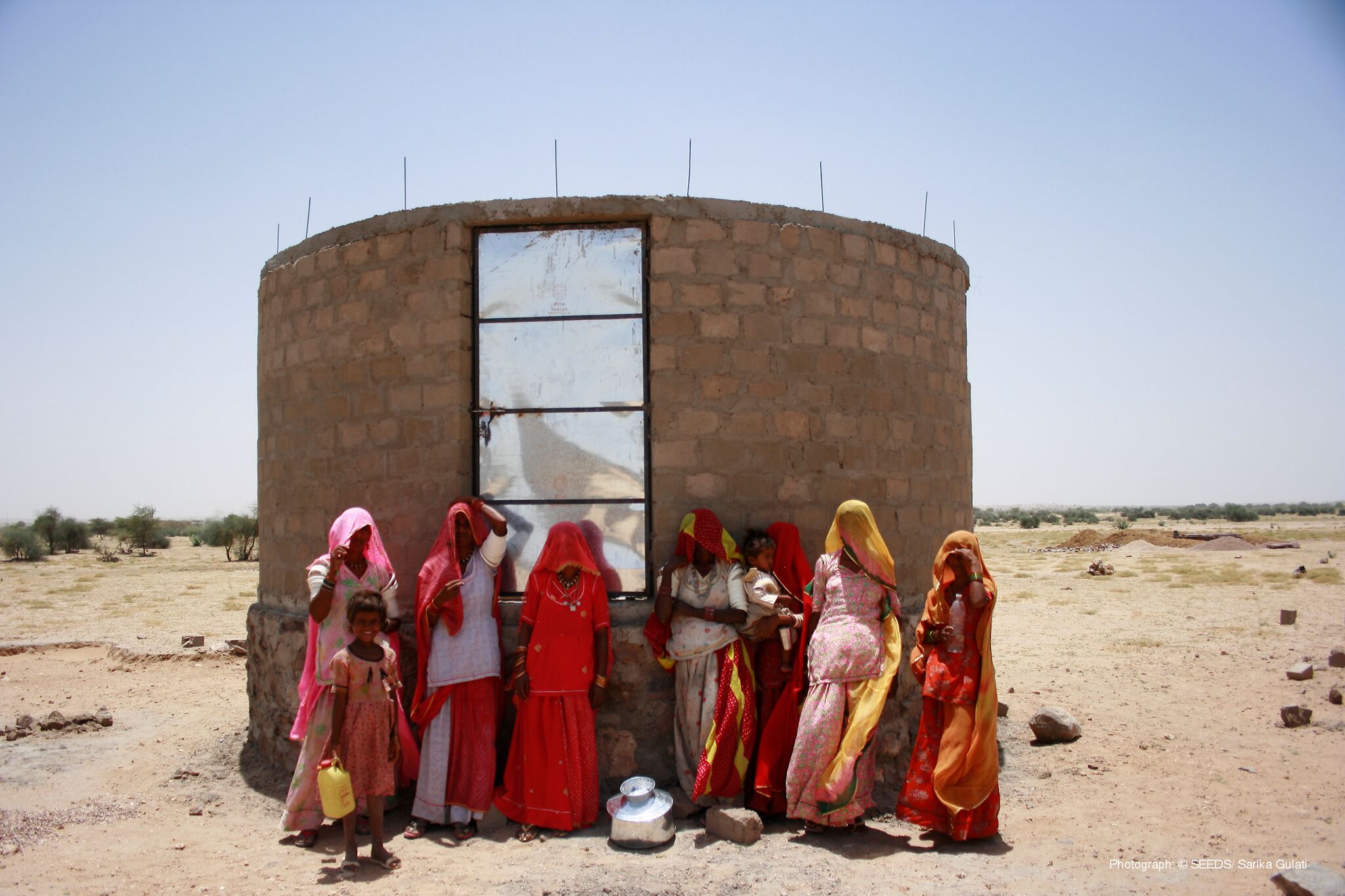
To save rainwater, SEEDS also built seven wells. Locally known as ‘tankahs’, each can hold up to 32,000 litres of water. For families who did not have or could not afford power supply, SEEDS installed solar panels in the house.
After the completion of the project, SEEDS left the block-making machines in the district for other people to construct the eco-friendly houses.
But as people had to use their own money, they preferred conventional dwellings.
The television advertisements on cement and real estate bombard people with ideas of having a house with concrete walls, marble flooring, glass windows and sliders. The lifespan of such houses is 50 years and the ones made from earthen materials is more than 100 years. People are not aware to realise this. A mass behaviourial change towards houses is needed, especially in regions that are prone to disasters, says Dr Sharma.
It has been 13 years since the eco-friendly houses were constructed and in terms of impact, most of the families in these houses do not use a heater during winters and fans during summer.
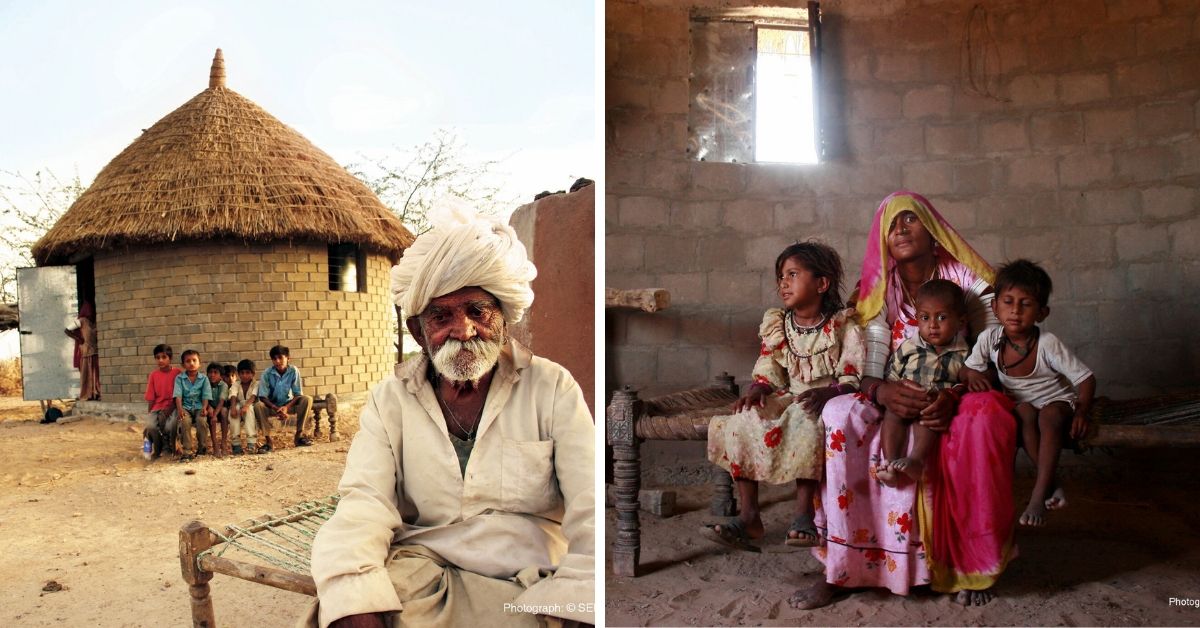
As for durability, they have survived extreme weather conditions including incessant rains, raging dust storms and earthquakes.
You can get in touch with SEEDS here.
Also Read: Low Bills, Low Water Use, No Waste: These ISRO Scientists’ Homes Are Green Wonders
Picture Courtesy: SEEDS
(Edited by Saiqua Sultan)
Like this story? Or have something to share?
Write to us: [email protected]
Connect with us on Facebook and Twitter.
If you found our stories insightful, informative, or even just enjoyable, we invite you to consider making a voluntary payment to support the work we do at The Better India. Your contribution helps us continue producing quality content that educates, inspires, and drives positive change.
Choose one of the payment options below for your contribution-
By paying for the stories you value, you directly contribute to sustaining our efforts focused on making a difference in the world. Together, let's ensure that impactful stories continue to be told and shared, enriching lives and communities alike.
Thank you for your support. Here are some frequently asked questions you might find helpful to know why you are contributing?


This story made me
-
97
-
121
-
89
-
167














